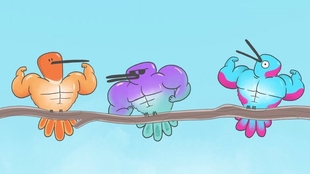Hummingbird Nectar Secrets: The Ultimate Guide to Attracting Your Feathered Friends
Guide or Summary:Nectar TypeRecipe for Hummingbird NectarHummingbird Attraction TechniquesLocationFeeder TypePlanting Hummingbird-Friendly PlantsHummingbird……
Guide or Summary:
- Nectar Type
- Recipe for Hummingbird Nectar
- Hummingbird Attraction Techniques
- Location
- Feeder Type
- Planting Hummingbird-Friendly Plants
- Hummingbird Behavior and Habits
Hummingbirds, with their dazzling iridescent feathers and incredible hovering abilities, are a delight to observe in the garden. These tiny, yet striking birds, are not only a pleasure to watch but also play a vital role in pollination, making them a welcome addition to any garden. If you're eager to entice these enchanting creatures to your backyard, you've come to the right place. This comprehensive guide will reveal the hummingbird nectar secrets that will ensure your feeder becomes a magnet for these tiny treasures.
Nectar Type
Hummingbirds thrive on nectar, the sweet, liquid substance found in the flowers of many plants. The nectar is rich in sugar and provides the energy hummingbirds need to sustain their high-speed flights and rapid wing movements. To attract these tiny birds, it's crucial to use nectar that mimics the sugar content of their natural food sources. While commercial hummingbird nectar mixes are available, making your own is not only more economical but also more enjoyable. Here's how to create the perfect hummingbird nectar:

Recipe for Hummingbird Nectar
To create hummingbird nectar, you'll need four parts water to one part white granulated sugar. Boil the water, add the sugar, and stir until the sugar is completely dissolved. Allow the solution to cool before transferring it to your hummingbird feeder. It's essential to use clean, sterilized feeders to prevent the growth of mold and bacteria, which can be harmful to the birds.
Hummingbird Attraction Techniques
Once you've prepared your hummingbird nectar, it's time to attract these tiny birds to your feeder. Here are some effective techniques to ensure your feeder becomes a hummingbird hotspot:
Location
Hummingbirds prefer open, sunny locations, so position your feeder in a spot where it will receive plenty of sunlight throughout the day. Avoid placing your feeder near trees or bushes, as these can provide cover for predators, making it difficult for hummingbirds to feed in safety.
Feeder Type
There are several types of hummingbird feeders available, including sugar water feeders, hummingbird mugs, and even hummingbird feeders designed to hang from trees. It's essential to choose a feeder that's easy to clean and maintain, as hummingbirds are attracted to clean feeders.

Planting Hummingbird-Friendly Plants
While your feeder will provide a steady supply of nectar, planting hummingbird-friendly plants will add an extra layer of attraction to your garden. Hummingbirds are attracted to plants with brightly colored flowers, such as bee balm, salvia, and penstemon. These plants will not only provide a food source for hummingbirds but also add color and interest to your garden.
Hummingbird Behavior and Habits
Understanding hummingbird behavior and habits is essential for attracting these tiny birds to your feeder. Hummingbirds are territorial and prefer to feed in areas where they feel safe. By providing a safe and secure feeding environment, you'll increase the chances of attracting hummingbirds to your feeder.
In conclusion, attracting hummingbirds to your feeder requires a combination of nectar type, feeder placement, and planting hummingbird-friendly plants. By following these simple tips, you'll create a hummingbird haven that will provide hours of pleasure and enjoyment. So, why wait? Start creating your hummingbird nectar today and watch as these tiny, yet incredible birds become a regular feature in your garden.